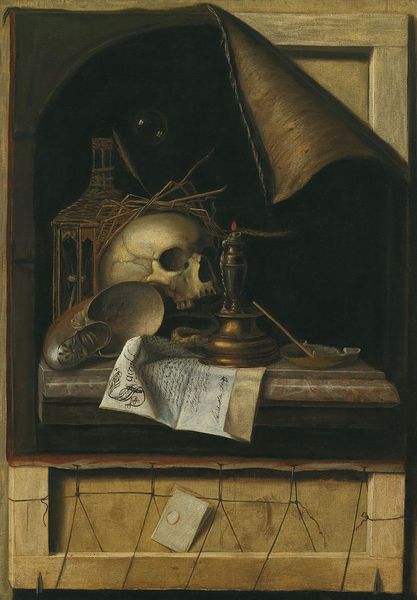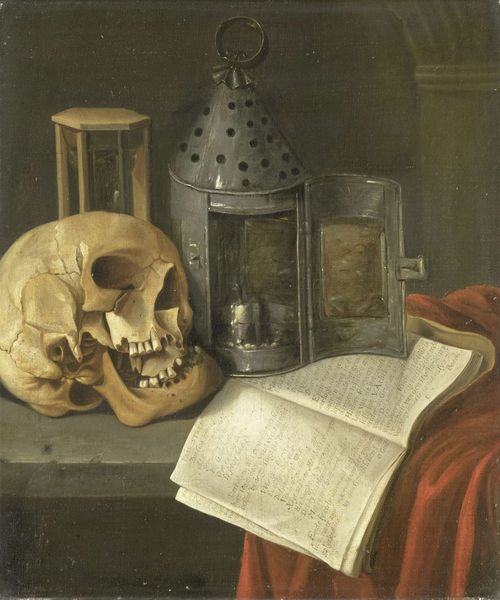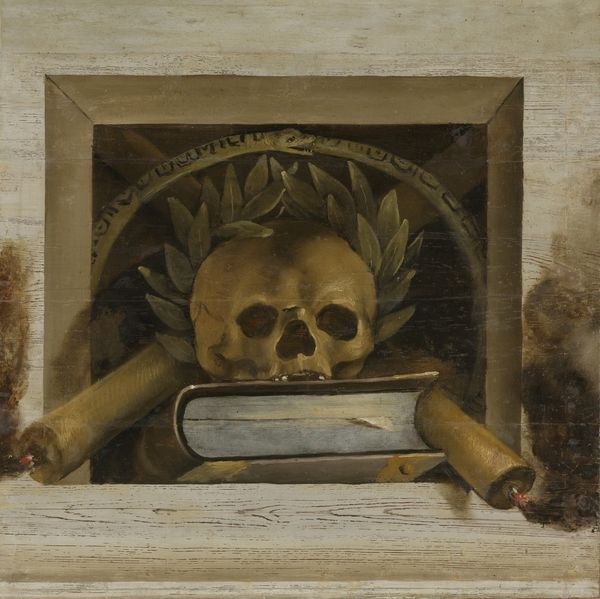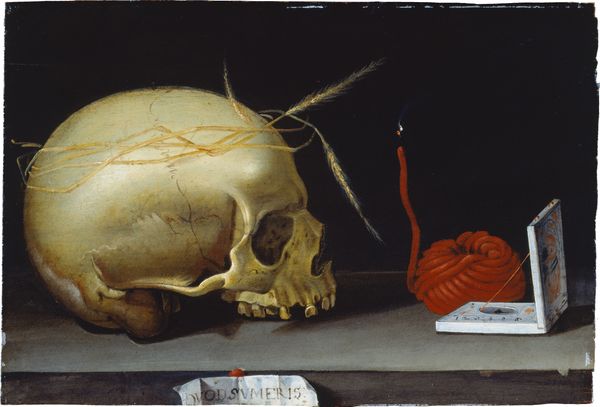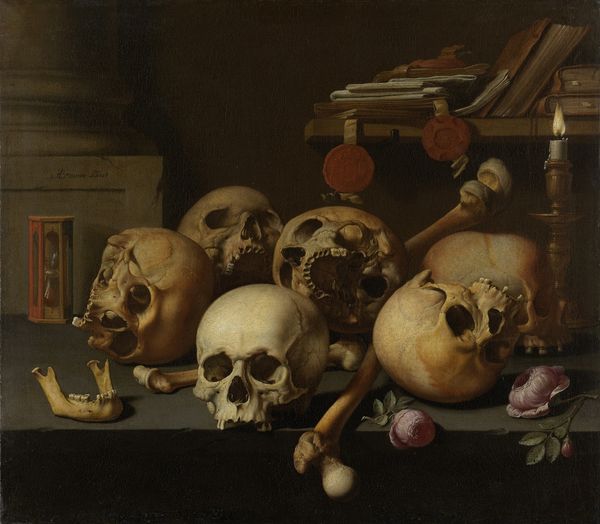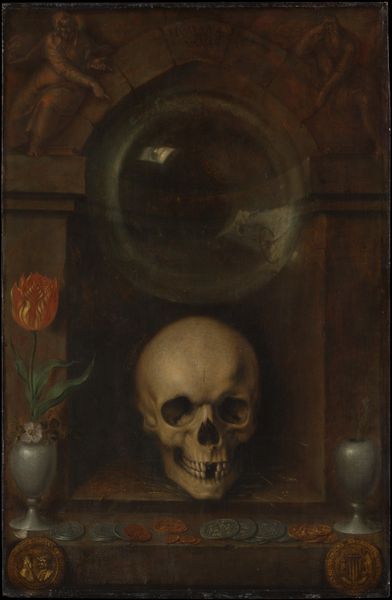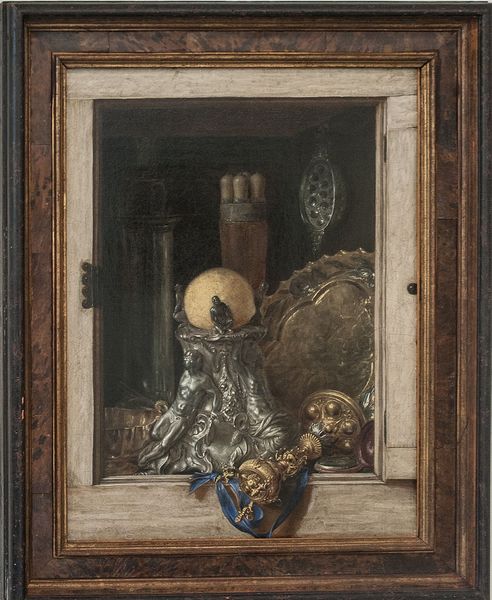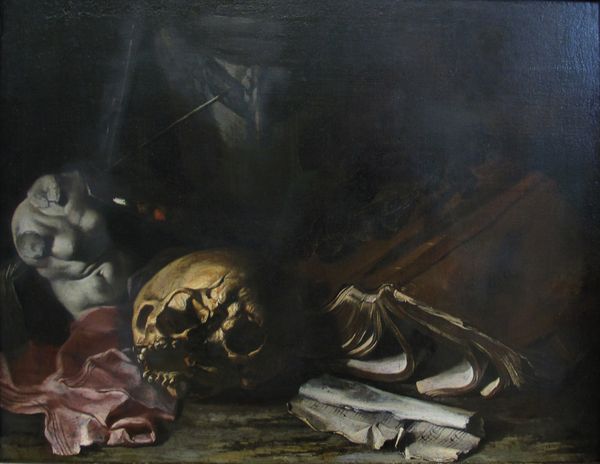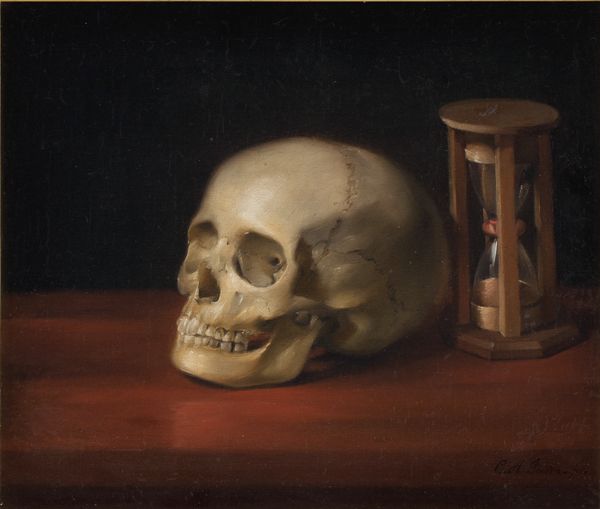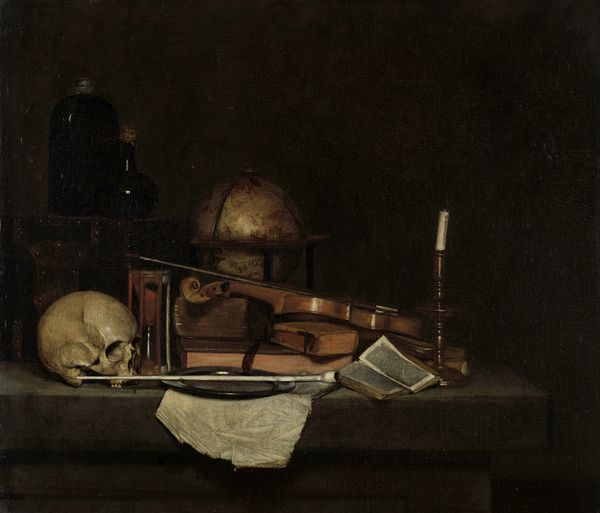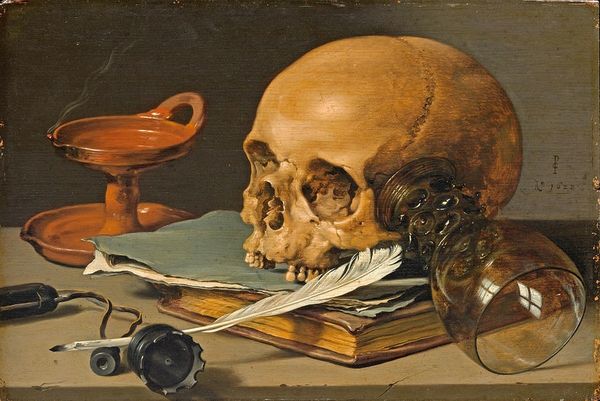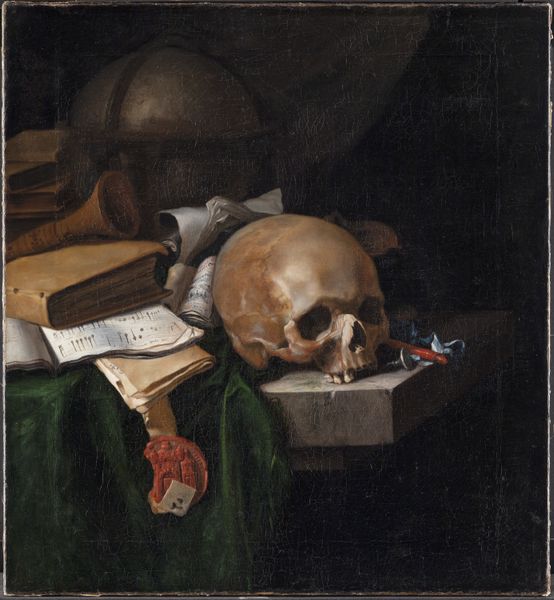
Trompe l'oeil with Studio Wall and Vanitas Still Life 1668
0:00
0:00
cornelisnorbertusgysbrechts
National Gallery of Denmark (Statens Museum for Kunst), Copenhagen, Denmark
oil-paint
#
narrative-art
#
baroque
#
dutch-golden-age
#
oil-paint
#
oil painting
#
vanitas
#
history-painting
#
trompe-l'oeil
#
realism
Copyright: Public domain
Editor: Here we have Cornelis Norbertus Gysbrechts' "Trompe l'oeil with Studio Wall and Vanitas Still Life" from 1668. It’s an oil painting that immediately strikes me as a collection of afterthoughts—an artistic mise-en-scène if you will. What catches your eye? Curator: Indeed. What I see is a meditation on time and memory. The "Trompe l'oeil," the "fool the eye" effect, is interesting in itself, creating an illusion of reality. But let’s look closer at the vanitas elements, the skull, the burning candle—they’re potent symbols. What feelings or ideas do they evoke for you? Editor: Mortality, obviously. And perhaps the fleeting nature of life, but almost in a comforting way? Curator: Precisely. The objects form a visual language, a conversation across time. Think about the cultural memory embedded in these symbols. The Dutch Golden Age saw an explosion of wealth and scientific inquiry. And this painting shows that life’s purpose isn’t just money, status, or scientific advancement: all vanish in time. The artist even includes portraits and other reminders of artmaking! The skull and instruments remind us of our place within existence. Editor: It’s clever how Gysbrechts merges illusion and symbolic weight. What about the composition—how does that contribute? Curator: It is important! Notice the slightly chaotic arrangement, a departure from more rigid compositions of the time. It reinforces the idea of impermanence, the entropy that affects all things. Is that chaos inviting or concerning? Editor: I suppose, inviting! I now look at the painting as not merely an illusion, but an experience that shows how everything changes. Curator: Exactly. A mirror reflecting our own mortality. Editor: I am so excited that my initial impressions took me to this rewarding understanding. Thank you!
Comments
No comments
Be the first to comment and join the conversation on the ultimate creative platform.
